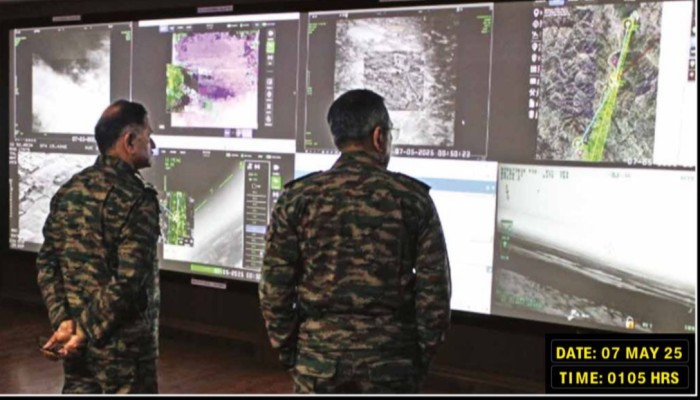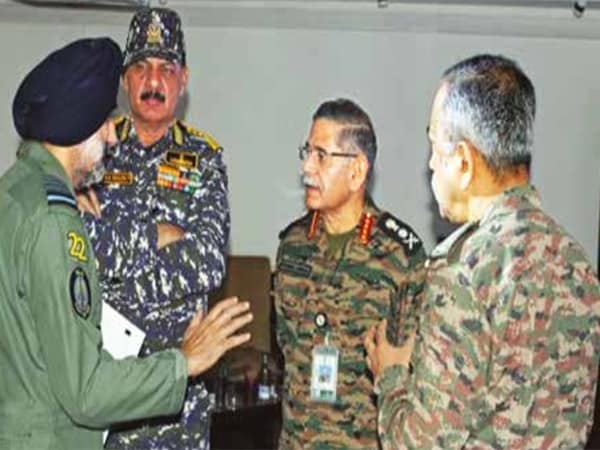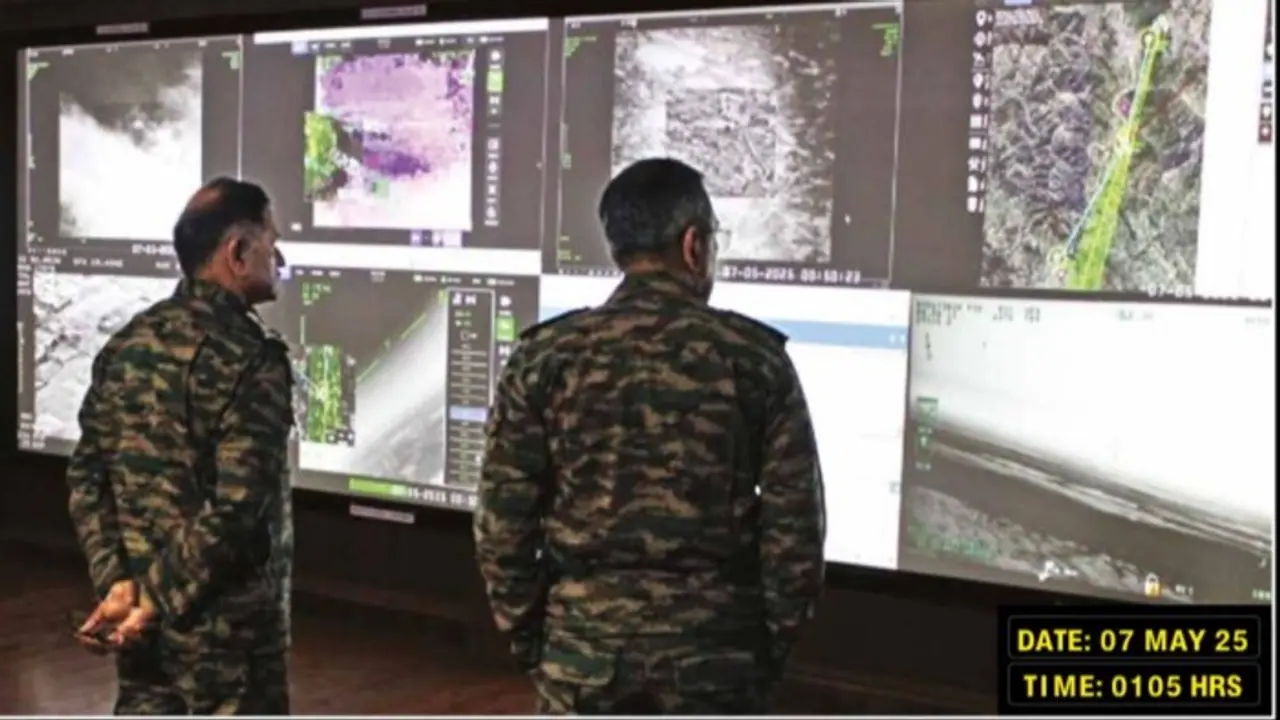India releases first-ever images from Operation Sindoor’s war room, showing tri-service chiefs monitoring strikes on Pakistan-backed terror camps. The operation, backed by global outreach, targeted high-value terrorist sites post-Pahalgam attack.
In a rare move, the Indian Army has released the first-ever images from the operations room where the top military leadership, Army Chief General Upendra Dwivedi, Navy Chief Admiral Dinesh K Tripathi, and Air Force Chief Marshal AP Singh, oversaw Operation Sindoor, the tri-services military action launched against terror camps in Pakistan and Pakistan-occupied Kashmir (PoJK).



The photos capture the tense moments of strategic coordination as the chiefs monitored precision strikes on the night of May 7, following the brutal terror attack in Pahalgam that killed 26 Indian civilians.
What is Operation Sindoor?
Operation Sindoor was India’s calibrated military response to the April 22 Pahalgam terror attack, which was orchestrated from Pakistan. Under this operation, Indian forces targeted nine high-value terror hideouts belonging to Jaish-e-Mohammed, Lashkar-e-Taiba, and Hizbul Mujahideen. Of these, four were located inside Pakistan and five within PoJK. Indian defence sources have described the mission as “focused, measured and non-escalatory,” emphasising that the strikes deliberately avoided Pakistani military facilities.
Tri-services coordination in action
The photo of the war room underlines the significance of tri-services coordination in modern warfare. This was the first time an image of India’s service chiefs leading an active military operation was officially released, a move seen as reinforcing transparency and public confidence in national security efforts. The strikes were carried out from Indian territory using precision technology, with real-time coordination between the Army, Navy, and Air Force.
Diplomatic follow-through
While the military front was activated on May 7, India simultaneously launched a major diplomatic outreach. The Modi government has deployed seven multi-party parliamentary delegations to over 30 countries, including the US, UK, Saudi Arabia, France, Germany, Japan, and Brazil, to communicate India’s zero-tolerance approach to terrorism. These delegations, each led by a Member of Parliament, are also aimed at countering global misinformation and exposing Pakistan’s continued support to terror outfits.
PM Modi, S. Jaishankar double down
Speaking at NITI Aayog’s Governing Council meeting, Prime Minister Modi stressed that Operation Sindoor should not be viewed as a “one-off initiative,” and urged states to institutionalise civil defence preparedness in light of modern threats. Meanwhile, External Affairs Minister S. Jaishankar chaired a high-level meeting with the Parliamentary Consultative Committee to address the broader implications of the operation. Sources say India deliberately struck high-value terror targets early in the campaign to send a clear message and reveal Pakistan’s failure to secure these hotspots of terrorism. According to officials, the operation had a strong psychological impact on Pakistan’s armed forces.
Cessation of hostilities
Following the strikes, a call from Pakistan’s Director General of Military Operations (DGMO) to his Indian counterpart helped de-escalate the situation. Both nations have since reached an understanding to halt further military action, though India has made it clear that any future provocation will be met with firm retaliation.
- With ANI inputs


